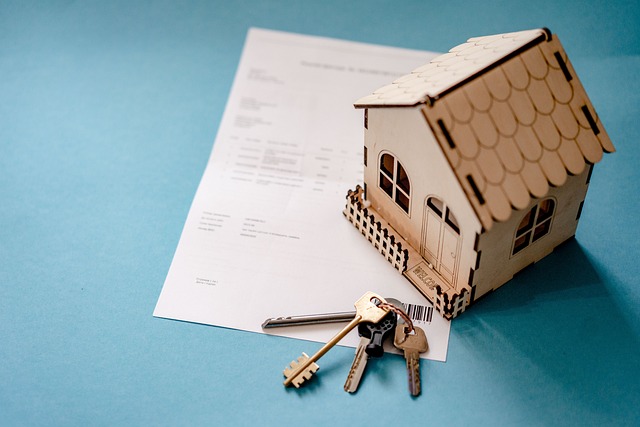Pension-backed home loans (PBHLs) offer retirees an innovative financing option, using future retirement funds as collateral for mortgages. These loans cater to individuals aged 62 and above with access to pension accounts like 401(k)s and IRAs. Eligibility hinges on stable pension income, good credit history, and the ability to manage monthly payments. Government-sponsored pensions are generally preferred due to their guaranteed benefits. PBHLs provide flexible terms (10-30 years), competitive interest rates, and alignment with pension payment cycles, making them ideal for retirees relying on pension income. However, they come with up-front costs, borrowing power restrictions, and market fluctuations risks, necessitating careful consideration. The application process involves compiling documents, credit checks, and guidance from approved lenders or brokers.
Pension-Backed Home Loans (PBHLs) offer a unique financing option for homeowners, leveraging retirement savings for property acquisition. This comprehensive guide explores PBHL guidelines, from understanding the concept and eligibility criteria to accepted pension plan types and loan structure. We delve into benefits, drawbacks, and the step-by-step application process, providing insights essential for borrowers considering this alternative lending method. Discover how PBHLs can facilitate homeownership while managing retirement funds effectively.
- Understanding Pension-Backed Home Loans: A Comprehensive Overview
- Eligibility Criteria for Borrowers: Requirements and Conditions
- Types of Pension Plans Accepted: Government vs Private Schemes
- Loan Structure and Terms: Repayment Periods and Interest Rates
- Benefits and Drawbacks: Weighing the Pros and Cons
- Application Process: Step-by-Step Guide for Secure Lending
Understanding Pension-Backed Home Loans: A Comprehensive Overview

Pension-backed home loans are a unique financial instrument designed to help individuals access homeownership with the support of their pension funds. This innovative approach leverages the future value of a person’s pension savings to secure a mortgage, offering an alternative financing option for those who might face challenges in traditional lending. By tapping into the long-term growth potential of pensions, these loans provide an opportunity for folks to invest in their most significant asset—their home.
This type of loan is particularly advantageous for retirees or individuals with substantial pension savings. It allows them to utilize their retirement funds as collateral, enabling a more flexible and potentially lower-interest rate mortgage compared to conventional loans. The process involves a comprehensive assessment of the borrower’s pension portfolio, ensuring its stability and potential for growth. This approach not only facilitates homeownership but also encourages responsible financial planning by integrating housing and retirement savings strategies.
Eligibility Criteria for Borrowers: Requirements and Conditions

When considering a pension-backed home loan, understanding the eligibility criteria is paramount. Borrowers must meet specific requirements set by lenders to qualify for this unique financing option. Typically, individuals aged 62 or older who have access to their pension funds are eligible. This includes retirement accounts like 401(k)s, IRAs, and other qualified retirement plans. Lenders assess the stability and predictability of the borrower’s pension income to ensure a consistent ability to make loan repayments.
The eligibility criteria also involve a thorough review of the borrower’s credit history and overall financial situation. Good credit standing is generally expected, as it indicates responsible borrowing and repayment habits. Additionally, lenders may consider factors such as current employment status, other outstanding debts, and the borrower’s ability to afford the monthly loan payments, ensuring a balanced financial outlook throughout the loan term.
Types of Pension Plans Accepted: Government vs Private Schemes

When considering a pension-backed home loan, understanding the types of pension plans accepted is crucial. In most cases, government-sponsored pension schemes are more widely accepted than private ones due to their structured nature and guaranteed benefits. Schemes like the Public Sector Pension Scheme (PSPS) or similar state-run pensions often facilitate these loans as they provide a consistent income stream with set contribution rates, making them less risky for lenders.
Private pension plans, on the other hand, can vary widely in terms of flexibility and stability. While some private schemes may offer attractive benefits, including higher interest rates on savings, they might not be as readily accepted by lenders due to their variability. This is because private pensions often come with different rules, contribution limits, and potential risks that are not standardized like government schemes, which can make them less predictable for loan approval processes related to pension-backed home loans.
Loan Structure and Terms: Repayment Periods and Interest Rates

Pension-backed home loans offer a unique financing option with flexible structures and terms tailored to borrowers’ retirement savings. These loans are designed to align with the natural cycle of pension payments, providing a steady stream of repayment over time. Typically, repayment periods can range from 10 to 30 years, allowing borrowers to spread out the cost of their home ownership.
Interest rates for these loans often reflect the stability and security provided by pension assets. Lenders may offer competitive rates, especially for borrowers with substantial pension savings. Variable interest rates are common, allowing for potential adjustments based on market conditions over the loan term. This structure ensures that repayments remain manageable during retirement when pension income might be a primary source of financial stability.
Benefits and Drawbacks: Weighing the Pros and Cons

Pension-backed home loans offer a unique financial instrument for borrowers, with both advantages and potential drawbacks. One of the key benefits is access to capital; these loans tap into an individual’s pension savings, providing a steady stream of funds for housing expenses. This can be particularly advantageous for retirees or those nearing retirement who seek financial stability and predictability in their post-work years. Furthermore, such loans often come with competitive interest rates and flexible repayment terms, allowing borrowers to manage their finances effectively.
However, there are considerations to keep in mind. Pension-backed home loans may require significant up-front costs, including application fees and valuation charges, which can be a burden for some applicants. Additionally, the borrowing power might be limited to the value of an individual’s pension pot, potentially restricting access to larger loan amounts. While these loans offer security through pension assets, borrowers must also be prepared for potential changes in market conditions that could impact their pension values over time.
Application Process: Step-by-Step Guide for Secure Lending

The application process for Pension-Backed Home Loans (PBHLs) involves several steps designed to ensure secure lending. It begins with the borrower gathering essential documents, including their pension statements and financial disclosures. This initial stage is crucial as it provides lenders with a comprehensive view of the applicant’s financial health and retirement savings. Once these documents are prepared, borrowers can approach approved lenders or brokers who specialize in PBHLs.
These professionals guide applicants through the process, helping them understand their eligibility and the loan options available. They assess the borrower’s pension pot, considering factors like its value, stability, and expected longevity. This meticulous evaluation ensures that loans are granted responsibly, aligning with the borrower’s financial capabilities and long-term goals. The application then progresses to a thorough credit check, followed by a decision from the lender, typically within a reasonable timeframe.
Pension-backed home loans offer a unique financing option, combining retirement savings with homeownership. By understanding the guidelines and eligibility criteria outlined in this article, borrowers can make informed decisions about this alternative lending approach. With various types of pension plans accepted and flexible loan structures available, these loans provide an attractive prospect for those seeking to utilize their pension benefits. However, it’s essential to weigh the pros and cons carefully before applying, considering both the benefits, such as lower interest rates, and potential drawbacks like specific repayment periods. Following the step-by-step application process ensures a secure lending journey, enabling individuals to navigate this option effectively in today’s financial landscape.







